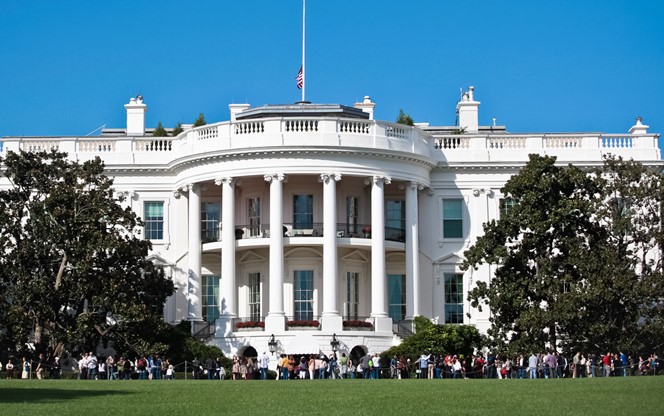

Archived Insight | July 7, 2022
On July 6, 2022, the PBGC released a final rule on the multiemployer Special Financial Assistance (SFA) program, which was created by the American Rescue Plan Act (ARPA).
The final rule makes significant changes to key provisions in the 2021 interim final rule (IFR) to enable eligible plans, after receiving SFA, to pay all benefits and expenses due through 2051.

Share this page
Trustees of plans who are considering or revisiting the decision of whether to apply for SFA, as well as trustees of plans that have already received or been approved for SFA should consult with their advisors, including their investment advisors, about next steps in response to the final rule.
This article highlights the key changes made in the final rule, which will be published in the July 8, 2022 Federal Register and replaces the IFR (see our July 15, 2021 insight). The final rule will become effective on August 8, 2022. This article is not meant to be a comprehensive summary of the final rule.
The final rule changes how plans determine the SFA amount needed to pay benefits and expenses through 2051. The IFR required use of a single interest rate to value the shortfall of resources to expected benefits and expenses. The final rule provides for a cash-flow projection using two interest rates — one for non-SFA assets and one for SFA assets — to account for the restrictions on investment options for SFA assets.
In determining the SFA amount,
Under the final rule, almost all eligible plans will receive a greater amount of SFA than under the IFR because of the lower interest rate for SFA assets.
The IFR required SFA assets to be invested only in low-risk assets. The final rule broadens the definition of low-risk assets so that the investment return is likely to be projected to be higher and achieve the returns used to determine the amount of SFA.
Plans may invest up to 33 percent of SFA assets in certain “return-seeking investments” (i.e., publicly traded equities, equity funds and bonds). The remaining 67 percent of SFA assets must still be invested in investment-grade fixed income.
Under the IFR, plans with benefit suspensions approved under the Multiemployer Pension Reform Act of 2014 (MPRA) faced the dilemma of having the election of SFA relief to reinstate reduced benefits result in the plan becoming insolvent in 2051 or sooner. The final rule avoids this conflict by allowing MPRA plans to apply for SFA in an amount equal to the greatest of the following:
The IFR required plans to immediately include SFA as part of plan assets in determining withdrawal liability and to use mass withdrawal liability interest rates for the later of 10 years or for as long as the plan held SFA assets.
The final rule provides that mass withdrawal liability interest rates are used until the later of 10 years or the projected life of the SFA assets. The final rule also requires plans to phase-in recognition of SFA assets for determining unfunded vested benefits based on a formula.
Comments on the final rule’s withdrawal liability provisions are due on or about August 8, 2022. The final rule includes instructions on how to provide comments. The PBGC may revise these rules based on comments it receives.
Like the IFR, the final rule requires that SFA-recipient plans request PBGC approval before engaging in a merger. The final rule, however, provides additional guidance and flexibility on the conditions that apply to the merged plan.
Generally, the conditions imposed on SFA plans relating to prospective benefit increases, allocation of assets and allocation of administrative expenses do not apply to the merged plan. Other conditions continue to apply, but the merged plan may seek a waiver of certain conditions from the PBGC.
Upon initial submission, certain “base data” in the SFA application cannot be changed, including the measurement date, the interest rate and census data. The IFR defined the SFA measurement date as the last day of the calendar quarter preceding the plan’s initial application date. To allow more flexibility, the final rule revises that definition to be the last day of the third calendar month immediately preceding the plan’s initial application date.
The final rule also allows plans to file a “lock-in application” after March 11, 2023 and through 2025, even if the PBGC temporarily closes its filing portal. The lock-in application acts as a pro-forma initial application establishing the plan’s ability to file using a specific measurement date.
Plans that have already been approved for SFA can submit a supplemental filing to the PBGC to increase SFA amounts due to updated provisions in the final rule or to enable access to the final rule’s provisions on SFA investments and withdrawal liability.
Plans that have already submitted an application and are waiting for approval from PBGC can submit a supplemental filing after approval of the initial application or can withdraw their current application and re-submit an application under the final rule.
No supplemental filings may be made before August 8, 2022.
The PBGC also issued a fact sheet providing a comprehensive summary of the final rule.
Trustees of plans who are considering whether and when to apply for SFA based on the changes made by the final rule should consult their Segal actuary and other plan professionals to evaluate what impact the final rule may have.
Trustees of plans that have already received or have been approved for SFA should review the final rule with their Segal consultant to determine the extent to which the final rule permits additional assistance to be granted, and to evaluate the applicability of other changes.
Trustees should also contact their Segal Marco Advisors investment consultant to explore expanded investment options for SFA assets and to review their plan’s overall investment strategy in light of the changes made in the final rule.

Technology, ATC, Benefits Technology, Multiemployer Plans

Health, Multiemployer Plans, Public Sector, Healthcare Industry, Higher Education, Architecture Engineering & Construction, Corporate

Health, Multiemployer Plans, Public Sector, Healthcare Industry, Higher Education, Architecture Engineering & Construction, Pharmaceutical, Corporate
This page is for informational purposes only and does not constitute legal, tax or investment advice. You are encouraged to discuss the issues raised here with your legal, tax and other advisors before determining how the issues apply to your specific situations.
© 2025 by The Segal Group, Inc.Terms & Conditions Privacy Policy Style Guide California Residents Sitemap Disclosure of Compensation Required Notices